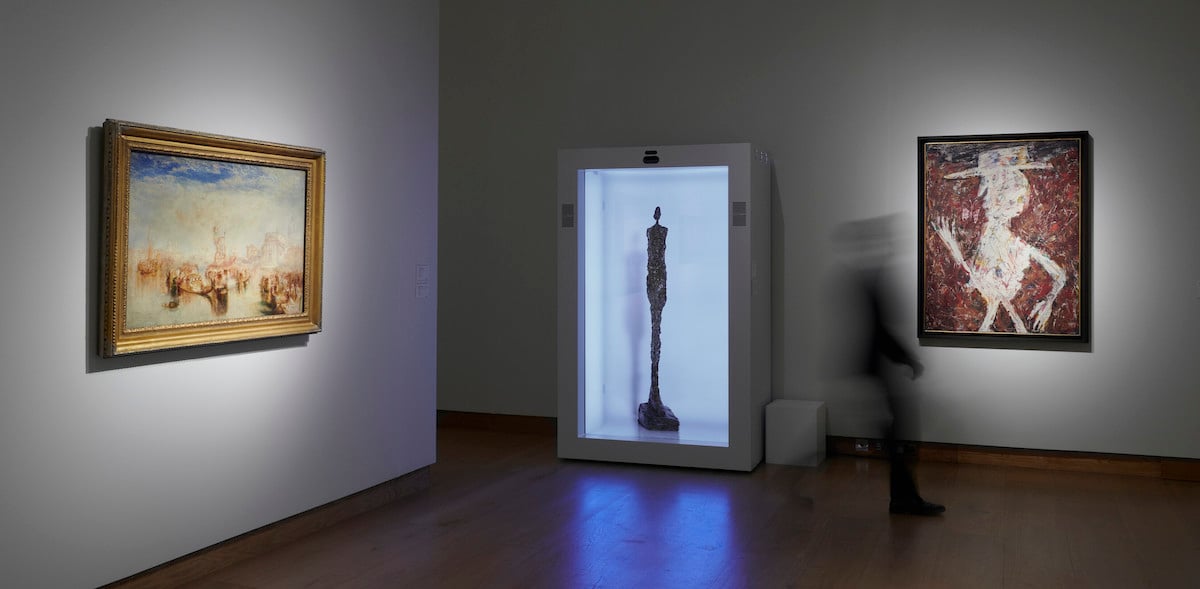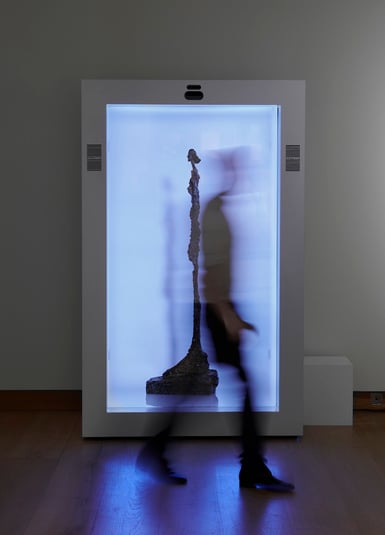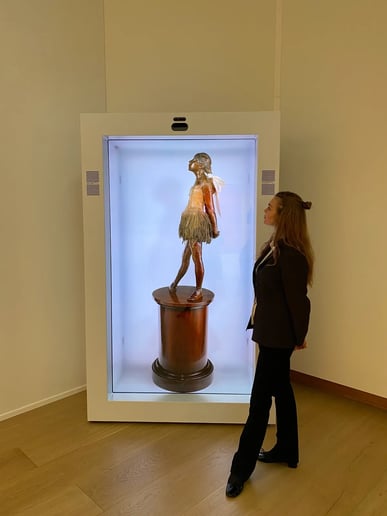Proto Hologram Meets AWS Builder Studio Introduction
Revolutionizing Art: Christie's and Proto Hologram's Cutting-Edge Collaboration
Revolutionizing Art: How Christie's Enhances Art Viewing with Proto Hologram Technology

Introduction:
In an era where technological innovation is reshaping every aspect of life, the art world is not left behind. The collaboration between Christie's, one of the world's leading auction houses, and Proto Hologram, a pioneering company in holographic technology, is a testament to this transformation. This partnership marks a significant leap in how art is viewed, experienced, and purchased. This blog post delves into this fascinating integration of art and technology, exploring how Christie's adoption of Proto Hologram's technology is not just a futuristic concept but a present reality transforming the art market.
Overview of Proto Hologram:
Founded in 2019, Proto Hologram has quickly emerged as a trailblazer in the realm of holographic communication. Proto’s technology allows for lifelike holographic presentations, offering an immersive experience that transcends traditional boundaries. The company's products, such as the Proto Epic and the Proto M, are based on a proprietary operating system that delivers stunning 4K resolution interactions. Proto Hologram’s solutions have found applications across various sectors, including entertainment, healthcare, education, and even the art world
Christie's Adoption of Proto Hologram Technology:

Christie's, with its storied history in the art market, has always been at the forefront of embracing innovative approaches to art curation and sales. Its partnership with Proto Hologram marks a new chapter. This collaboration first made headlines with the holographic display of Edgar Degas's "Petite danseuse de quatorze ans," a sculpture valued between $20 million and $30 million. By leveraging Proto's technology, Christie's successfully circumvented the high costs and logistical challenges of traditional art transportation, particularly relevant in the wake of the global pandemic and rising shipping costs.
The hologram, produced by Proto, was showcased at Christie's San Francisco and later transported to Hong Kong via the cloud. This revolutionary approach not only saved on transportation costs and time but also opened up new possibilities for global art exhibitions and sales. The holographic display allowed visitors to experience the sculpture as if it were physically present, rotating slowly in its futuristic display case, a testament to the blend of artistic heritage and modern technology.
Proto's technology has given Christie’s a new tool to reach buyers and collectors worldwide. The holographic display of the Degas sculpture, which eventually sold for $41.6 million, illustrates the confidence buyers have in acquiring artworks they've viewed holographically. This technological advancement is not just a novelty; it's an effective tool that has the potential to reshape the global art market.
 Impact on the Art Market:
Impact on the Art Market:
The integration of Proto's holographic technology in Christie's operations signifies more than just a technological marvel; it represents a paradigm shift in the art market. The ability to transport art virtually anywhere in the world, instantly and without the need for physical shipping, presents a multitude of advantages. Not only does it make art more accessible to global audiences, but it also significantly reduces the carbon footprint associated with art logistics. This is particularly important in an era where environmental consciousness is paramount.
The use of holograms in art exhibitions and auctions could fundamentally change how artworks, especially sculptures, are transported and experienced. The potential for reduced jet travel and a smaller carbon footprint in the art world is not just a theoretical benefit but a tangible one. Christie's pioneering use of Proto's technology could set a new standard in the art world, blending ecological responsibility with the need for artistic expression and global accessibility.
Future of Holographic Technology in Other Industries:
While the impact of Proto's holographic technology in the art world is profound, its potential applications extend far beyond. The same technology that allows for a Degas sculpture to be holographically displayed in San Francisco and Hong Kong can revolutionize interactions in various other sectors. Education, healthcare, retail, and entertainment are just a few areas where Proto's technology can create immersive, interactive experiences, breaking geographical barriers and opening new possibilities for communication and engagement.
Conclusion:
The collaboration between Christie's and Proto Hologram is more than just a technological advancement; it's a vision of the future materializing in the present. It's a blend of art and innovation, tradition and modernity, creating a new realm of possibilities in the art market and beyond. As we look forward to a world increasingly influenced by innovative technology, the partnership between Christie's and Proto stands as a beacon of what's possible when creativity meets cutting-edge technology.
In a world where technology and art intersect more than ever, Proto Hologram is leading the way, reshaping our understanding and interaction with art in the 21st century. For art enthusiasts and technology aficionados alike, this is just the beginning of a fascinating journey.



